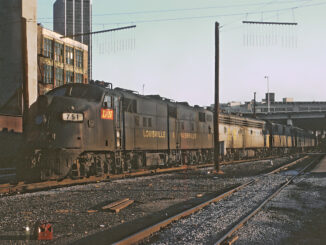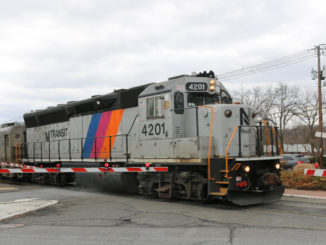CHICAGO – CSX Transportation (CSXT), the rail unit of CSX Corporation, has begun horn-free operations in a “quiet zone” on a four-mile stretch of its tracks extending through Blue Island, Evergreen Park and Chicago.
Trains passing through the quiet zone will not sound their horns unless hazardous or emergency conditions occur. The quiet zone is a demonstration project funded by the State of Illinois and sponsored by State Representative Kevin Joyce, CSX officials said.
Construction began on the quiet zone in November 2003 and was substantially completed in early September 2004. New conduit, cable, signal houses, four-quadrant gates, loop detection devices, median barriers, a monitoring system and flashing signals were part of new construction on the project. This quiet zone meets standards of the Federal Railroad Administration, which plans to implement rules governing establishment of quiet zones nationwide.
To meet quiet zone regulations and requirements, CSXT worked in partnership with the Illinois Commerce Commission to install four quadrant gate systems and other engineered safety measures at 123rd Street in Blue Island; 119th Street, 115th Street, 113th Street, 111th Street, 109th Street, 107th Street, 105th Street and 104th Street in Chicago; 99th Street in Chicago and Evergreen Park and 91st Street in Evergreen Park.
In addition and beyond the scope of the quiet zone project, CSXT rebuilt crossings at 99th Street, 111th Street and 115th Street. The cost of construction at these crossings is approximately $2.7 million.
“This is a good example of public-private partnerships allowing for the safe transport of goods and a better quality of life for area residents,” said Tony Tuchek, vice president for CSXT’s northern region. “Additionally, we recently have completed major reconstruction of Blue Island Junction. We are grateful to Rep. Kevin Joyce and the Illinois General Assembly for helping to fund this project.”
Senator Ed Maloney and Virginia Rugai of the Chicago 19th Ward also were involved in early planning and support of the project.
In late August 2004, CSX Operation Lifesaver personnel began canvassing area schools and community leaders with educational information on railroad safety.
“We want the public – especially our young people – to know that railroad safety must continue to be a way of life in the community,” said Ken Gilsdorf, CSXT’s Midwest Public Safety Coordinator. “Everyone needs to be attentive to the new system and conditions in the area.”
— PRNewswire-First Call




